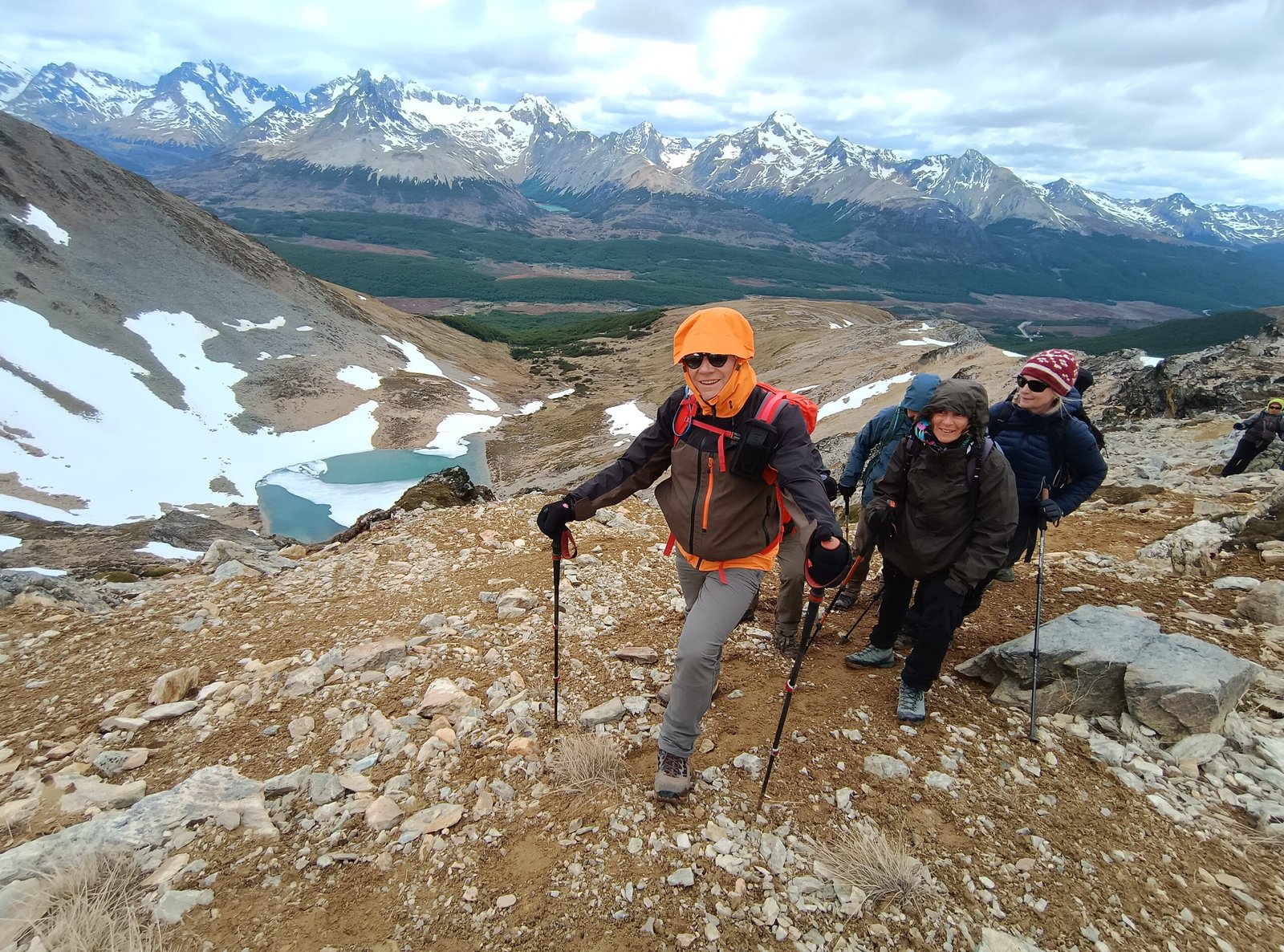HOW IS THE TERRAIN IN SOUTHERN PATAGONIA

The trekking in Tierra del Fuego has the particularity of being more demanding and to be done in pristine and sometimes inhospitable places. There are few marked trails on the mountain and there is a lot of off-trail walking during long treks. It is necessary to take into account the following factors in order to choose a trekking: own experience, experience of the group, distance, positive slope, negative slope, conditions of the terrain and type of terrain, accessibility, time and exposure.
Classifying:
Low difficulty (walking, hiking): No particular experience or skills required. Suitable for everyone with good general physical conditions.
Medium difficulty (hiking, trekking): It is convenient to have some experience of trekking. It needs a minimum of physical training (hiking) and previous information.
It has enough unevenness and the terrain can be steep. Suitable for everyone with recommendations and good general physical condition.
High difficulty (trekking): It requires training and experience to manage in nature, in a great variety of terrain. It has a lot of unevenness. The terrain may require the use of hands. Helmets may be required. Suitable for people with experience. Long and demanding days.
Semi-technical trekking: For well-trained people with good experience. It may require the use of a helmet or technical equipment. May have parts with exposure. Suitable only for people with training. Long and very demanding days.
Technical Trekking: Trekking with high level of difficulty, of prolonged duration with important slopes and exposure. For well trained people, with good experience and technical knowledge. May involve the use of rope, harness, ice axe, helmet and/or crampons.
Tierra del Fuego terrain:
In Tierra del Fuego we have very varied terrain between coasts and mountains with a lot of water in general. It is to be expected to have wet or damp feet.
Peat: peat is a soil composed of partially decomposed vegetable matter saturated with water, which is usually spongy and tiring.
Reeds: when walking through these pastures it is essential to pay attention as you advance, since it is normal to find a large number of wells clogged by vegetation. It is also normal to find a lot of water in this type of terrain.

Forests: although there are times when walking through forests is comfortable and open, at times walking through the forest involves encountering closed vegetation and
numerous fallen logs.
Beaver dams: These are beaver dams, their ponds and burrows. They make passage difficult since
flood the valleys, complicating their crossings and generating fields of fallen logs. Beavers make tunnels covered by grasses and reeds, which require the hiker’s attention when stepping on them. The dams are sometimes used as bridges, they are usually very solid but have raised poles that make their transit uncomfortable.
Mud: there will be occasions in which it will be necessary to cross large muddy surfaces. Be careful
when stepping on stones or logs with mud on the sole.
Sand: the firm sand of some beaches is undoubtedly the most desirable walking terrain, however it is sometimes soft and tiring to walk on.
Rocks: there are times when the coast presents firm rocks for walking, although most of the time the beaches are composed of pebbles and it is necessary to step firmly and be attentive to avoid injuries.
Scree: in mountain areas, accumulation of loose stones of small, medium and large size on the mountain slopes. They can be difficult to walk depending on the
degrees of slope and the humidity of the slope. Frost may be present and loose snow.

Weather
The climate is temperate and cold. Oceanic on the coasts and more continental in the center of the island. With little thermal amplitude, the average temperature is 0°C in winter and 10°C in summer. It precipitates 600 mm per year. The sun radiation can be very strong in the spring and summer months, it can also snow. The weather is very changeable with a lot of temperature variation in the same day so it is recommended to wear 3 or 4 layers of clothing and always have the elements underneath mentioned.

What to bring ?
● Trekking boots (mid-calf and NOT sneakers)
● Optional pant cover
● Sunglasses and sunscreen
● Medium backpack (30 liters or more)
● 2 pairs of Gloves and hat
● Cuello tipo Buff
● Abrigo para clima frío y una campera de lluvia
● Botella a rosca
Notes:
Rescues are complex in the mountains so, when choosing your trekking, is required to be aware of your own capabilities.
WATER: Water from rivers and streams is safe to drink.
DO NOT RELIEVE YOURSELF NEAR A WATERCOURSE OR LAKE.
DO NOT THROW ANYTHING AWAY, NOT EVEN TOILET PAPER. BURY OR COVER YOUR FAECES

